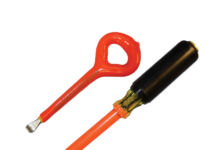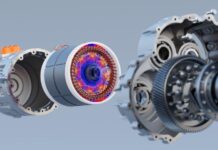Everyone knows what it feels like to be too hot. But far fewer people truly realize just how costly and dangerous excessive heat can be. Indeed, heat stress is a critical concern for individuals working or participating in activities in hot environments. Heat stress happens when the body’s innate cooling mechanisms struggle to properly regulate a safe internal temperature, which leads to a wide range of adverse effects that can be life-threatening. This article aims to shed more light on heat stress and to provide practical strategies for preventing heat stress and for protecting your workforce and workplace from its dangerous and deleterious impact.
 What is heat stress?
What is heat stress?
Put simply, heat stress arises when the body’s heat generation exceeds its capacity for heat loss. High temperatures combined with high humidity and physical exertion can intensify the risk. Several other factors contribute to heat stress, including ambient temperature, radiant heat sources, clothing, individual physiology, and hydration levels. Heat strain, on the other hand, is the body’s response to heat stress. And an individual’s heat strain is dependent on several factors as well: physical fitness, acclimatization, medical conditions, age, general health, weight, hydration levels and medications.
Why is it dangerous?
Heat-related illnesses can range from mild conditions, like dehydration and heat rash, to potentially lethal conditions, such as heat exhaustion and heat stroke. Heat exhaustion occurs as a result of excessive water and salt loss through sweating. And, clearly, heat exhaustion becomes even more dangerous if the affected person is operating machinery or performing risky tasks that require attention to detail. It is critical to recognize the symptoms of heat stress because it is generally treatable without medical attention. Untreated, however, heat stress can quickly worsen to full-fledged heat stroke – which is a medical emergency. Symptoms of heat exhaustion include: rapid heartbeat, profuse sweating, extreme weakness or fatigue, dizziness or fainting, nausea or vomiting, elevated body temperature, headache and thirst.
Heat stroke, a medical emergency, occurs when body temperature rises to a critical level (greater than 104° F). This can cause death and/or permanent disability and immediate medical attention should be sought if any of the following symptoms are experienced or witnessed: temperature over 104° F, confusion or loss of coordination, hot/dry skin or profuse sweating, throbbing headache, seizure or loss of consciousness.
Heat stress (and its concomitant medical conditions – heat exhaustion and heat stroke) isn’t just dangerous and potentially deadly; it also causes reduced productivity and increased cost. Uncomfortably hot facilities also promote increased absenteeism and workplace injuries, which naturally lead to negative employee morale and overall productivity.
Clearly, heat stress poses significant risks to the health, safety and comfort of individuals exposed to excessively hot environments. That said, with proper awareness and precautions, the dangers of heat stress can be mitigated. Prioritizing workplace and workforce comfort and safety is essential to ensure good health, well-being, and productivity in these overly hot environments.
How fans can help
Fans can be an effective, affordable, and efficient tool in combating heat stress. Part of their effectiveness flows from this truth: Fans cool people, not rooms. They create airflow that quickly evaporates perspiration from the skin, which carries away excess heat. Fans also reduce the thickness of hot, humid air that builds up around workers. These mechanisms improve heat dissipation and allow a person’s natural cooling ability to function properly. In general, fans help mitigate heat stress and improve heat dissipation through these mechanisms:
Evaporative cooling – As air moves across the skin, it enhances the rate of moisture (sweat) evaporation, which helps dissipate excess body heat.
Increased air circulation – Moving air reduces the local humidity around the body, preventing buildup of heat and moisture. Fans also improve air circulation within a space, which helps disperse stagnant, hot air. Finally, this air circulation promotes the exchange of heat between the body and the surrounding environment, enhancing the cooling effect.
Heat distribution – In a confined space, fans help more evenly distribute cool air from air conditioning systems. This reduces ‘hot spots’ and ensures a more consistent temperature, which improves comfort and lowers the risk of heat stress.
Psychological comfort – Fans also provide a psychological cooling effect, which creates a sensation of air movement and reduces the perception of heat even if the ambient temperature remains largely unchanged.
While fans can be greatly effective in managing heat stress, it’s worth noting that they are most beneficial when air temperature is lower than ‘normal’ body temperature (99° F or lower). In extremely hot and humid conditions, fans might not be enough to provide adequate relief, and other cooling options (like air conditioning or seeking shade) should be considered. Additionally, fan usage should be combined with proper hydration, appropriate clothing and other preventive measures outlined in this article to ensure comprehensive protection from heat stress.
Why Big Ass Fans?
Big Ass Fans, the world’s leader in developing, designing and delivering airflow solutions for commercial and industrial settings, specializes in building HVLS (high volume, low speed) fans that are purpose-built to provide the most effective and efficient air movement on earth. HVLS fans achieve this through:
Enhanced airflow – HVLS fans move large volumes of air at low rotational speeds, which creates a gentle breeze over a large area and promotes even better air circulation. This increased airflow helps evaporate moisture from the skin, enhancing the body’s innate cooling process.
Thermal equalization – In large enclosed spaces, temperature variation occurs when hot air rises and cooler air falls. A Big Ass fan can help break up this stratification by circulating air, creating a more uniform temperature throughout the space, reducing ‘hot spots’, and improving comfort levels on the lowest level of a facility where workers reside.
Comfort zone expansion – The large diameter and slow rotation speed of a Big Ass fans create a wide comfort zone. Expanding the comfort zone allows more people to benefit from the cooling effect and reduces the risk of heat stress in larger spaces.
Energy efficiency – Despite their size, Big Ass Fans are designed to operate with low energy consumption. Compared to traditional high-speed fans or air conditioning systems, Big Ass Fans provide effective cooling with reduced energy usage. This can result in energy cost savings while still maintaining a comfortable environment.
Since 1999, Big Ass Fans has been a trailblazer when it comes to innovation, research, and development of big fans (and small ones); and its dedication to safety and commitment to solving airflow problems is unmatched in the industry. Big Ass Fans are purpose-built to provide cooling power, improved air circulation, energy efficiency, and unrivaled durability with an ultimate goal of providing uncompromising comfort, even in the most extreme environments.
For More Information Visit https://BigAssFans.com












































